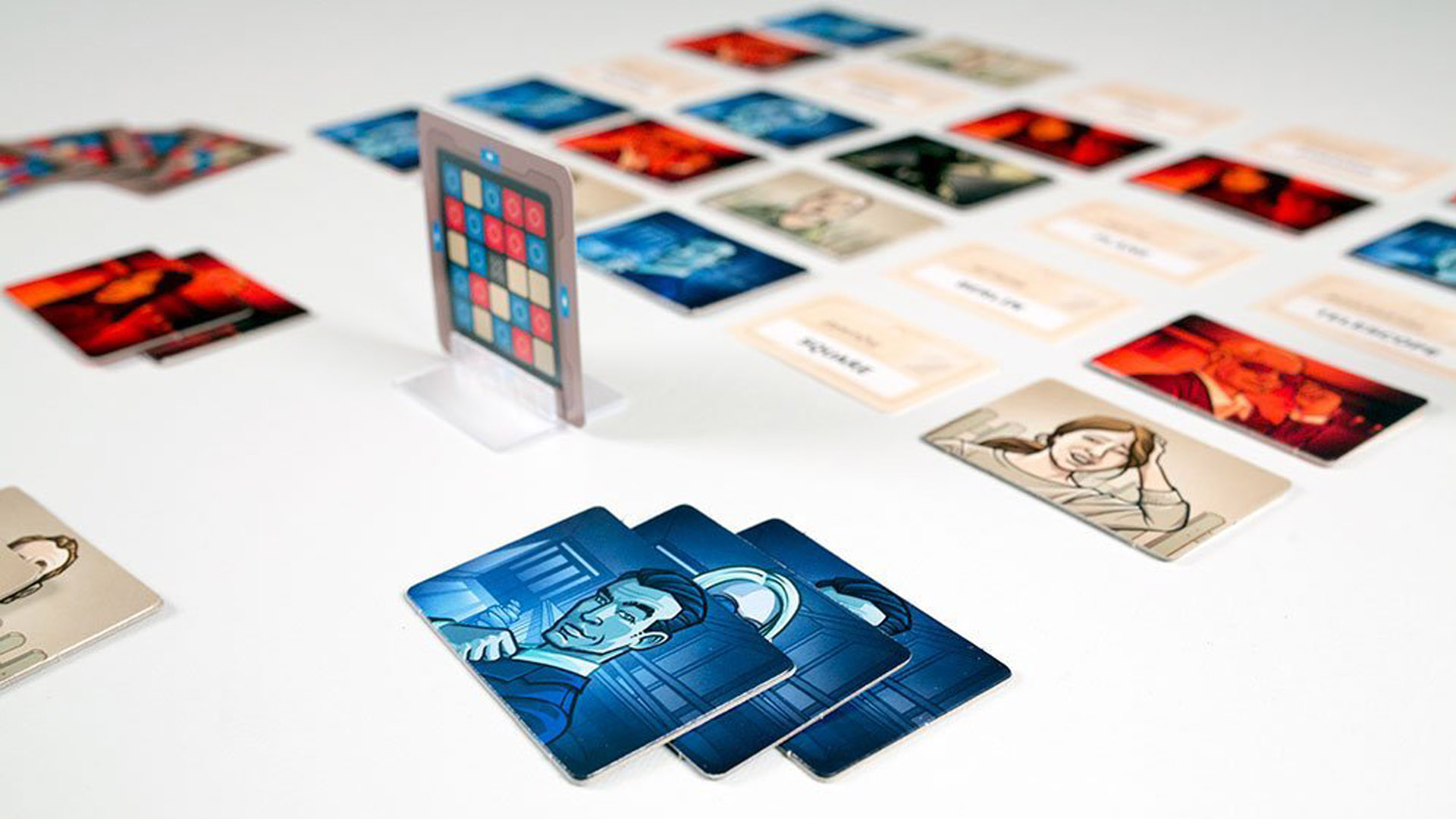Codenames review – Fast fun for parties

Codenames gets many things right. It is a very simple game with easy to understand rules, and you can start playing in a group right away without reading the rules or having them explained to you. The rounds are short and sweet, with each game lasting about twenty minutes or less. The time investment is minimal, and people can easily leave or join in the game at any time. Every moment throughout playing the game is fun, even if you are losing. Although the box says 2-8 people, there isn’t really an upper limit to the number of people who can play a game. All these factors together make it a great game for parties. This is a word game that encourages lateral thinking, and improves your vocabulary at the same time.
Setup
The setup is pretty simple. It starts with dividing all the people into two teams. Each team picks a spymaster, who will be directing the rest of the team, known as operatives. The spymasters need to sit a little to the side, away from the two teams. There is a deck of cards, that needs to be shuffled. 25 cards are laid out face up on the table, in a 5×5 grid. After that, the spymasters pick a card from a deck of “key cards”. This key card has a stand of its own, which can be placed between the spymasters. Throughout the game, the spymasters have to ensure that none of the operatives can peek at the grid on the key card. Now, people can start playing the game.

Gameplay
The back story is that you are a spymaster who has to reveal the identity of your agents to your own team of operatives. These agents have code names, which you have to convey to your team by smartly finding an underlying theme for the words on the table. The operatives then make contact with the agents by identifying them based on the words on the table. Making the right contact results in a correct identification and a reward. The idea is to thematically connect as many field agents as possible in a turn, and prevent the competing team from making contact with all their agents first.
Say the words are “Embassy”, “Berlin” and “America”, you can go for “Country” as the clue. If “Pistol” and “Missile” are two words that are colour coded for your team, then you can say something like “Ballistics” to make your team guess the right word. Spymasters have to be careful of avoiding their team from guessing the word for the assassin card – this is a single card in every grid. If the operatives make contact with the assasin, then the assasin kills of all the operatives. If anyone guesses this card on the board, then the game instantly ends because of a sudden death.
If people are taking too long to guess or provide a clue, then there is a timer in the box. The timer is not used as a part of a routine, but as a contdown only when a particular team is taking too much time.
Once a round is done, then the cards can be flipped over and a new grid selected to start another round. The operatives from each team can take turns being the spymaster.

Variations
There are variations of the game that allows people to play with less than four players, which is the minimum number required to play the game in the recommended way (two operatives, and two spymasters). If there are only two players, then one becomes the operative, and one becomes the spymaster. The challenge here is to figure out who is the better spymaster. In two player games, the spymaster has to simulate the opposing team, by strategically covering up a single card each turn. If there are three people, then the players can take turns becoming the spymaster, or there can be two spymasters who compete to get the correct answers out of the same operative. If there are a number of people, and people are not in the competitive mood, it is possible to play the two person variant of the game with all the people available. In our play testing, the two player mode is not nearly as fun as having two full teams, and competing against each other.
Apart from variations, there is also a version of the game called Codenames Pictures. It is essentially the same game, but instead of identifying agents, the operatives have to reach particular locations. The cards are made up of pictures instead of words. The advantage is that this version of the game can be played by people who do not understand the English language as well. Both Codenames and Codenames Pictures are available in the XXL size with bigger cards. This is for easy visibility for larger parties.
The box promises additional variations that are available on the site, but we could not find any over there. If you are able to find these additional modes, do let us know in the comments section below.
MOAR!
Designer: Vlaada Chvatil
Publisher: Czech Games Edition
Price: 1,675
Verdict
This is a well designed game, and incredibly addictive at that. We found ourselves coming back for one more go all the time. The game allows people who are unfamiliar with board games to quickly jump in. The game is very flexible, and results in some very interesting things when it comes to interpersonal dynamics. It is possible to come up with elaborate cheating strategies (including hand signs), so be wary of that. The game does not get repetitive, even though the same words start showing up across many play sessions. It is also not a game that gets boring after many rounds. One of the problems is that the game has to be played in English, and everyone playing must have a broad understanding of places and things around the world. Very young children cannot play the game. It is also better to play the game with people who know each other well. Still, this is one of the best games we have come across, and highly recommend it for weekend getaways and house parties.
Comments
[ad_2]
Source link





